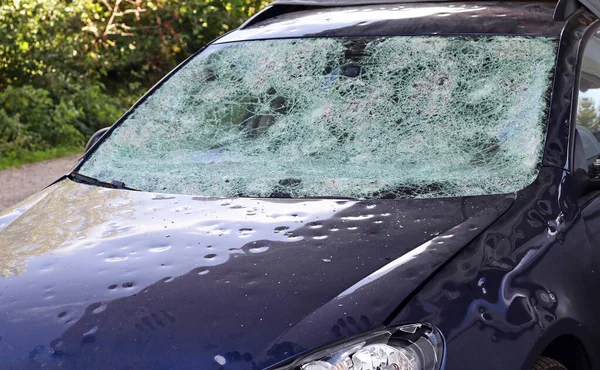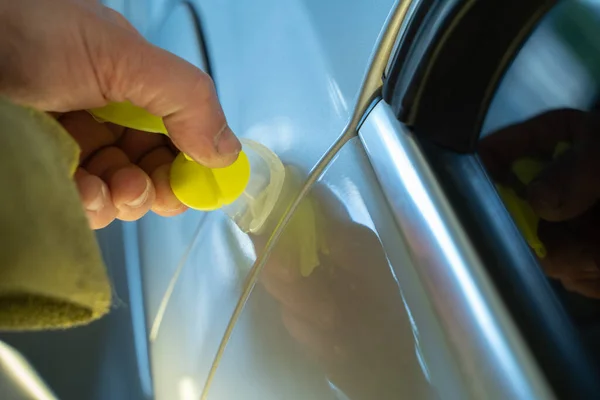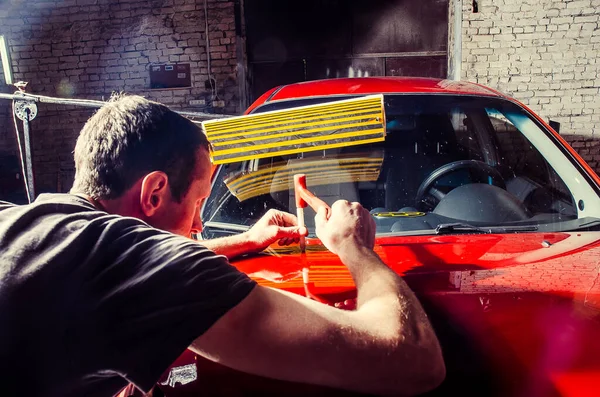Hail Dent Repair: What Every Car Owner Needs To Know
Hailstorms are infamous for causing unsightly dents and dings on cars. Regardless of whether you're a novice car owner or an experienced driver, knowing how to handle hail damage repair is essential for preserving your vehicle's appearance and value. This detailed guide provides insights on evaluating the extent of the damage and deciding between do-it-yourself solutions or professional services, equipping you with the information needed to make an informed choice for your automobile.
What Causes Hail Damage?
Hail can vary in size from as small as a pea to as large as a golf ball or even bigger, and it has the potential to inflict significant harm on a car's body. When these ice pellets strike a vehicle, they can create dents and dings, and in some cases, they may also lead to chipped paint or shattered windows.
How Does Hail Damage Affect Your Vehicle?
Hail damage isn’t just a cosmetic issue—it can lower your car’s resale value and, if left unaddressed, could lead to further problems. Dents and dings can weaken the metal of your vehicle’s exterior, and if the paint is cracked, exposed areas can rust over time. Addressing hail damage quickly can prevent costly repairs down the road and help preserve your car's value.
Identifying the Extent of Hail Damage
Types of Hail Dent Damage
- Minor Dents: These are slight, superficial indentations that do not break through the paint surface. They are usually straightforward to fix and can often be addressed with do-it-yourself techniques.
- Moderate Dents: These dents are more pronounced and may compromise the paint layer, making them harder to repair without assistance from a professional.
- Severe Damage: This category includes significant dents that have resulted in cracked paint or potential structural harm to the vehicle's body. For these situations, seeking professional repair services is strongly advised.
DIY Assessment Tips
To assess potential hail damage on your vehicle, examine it in bright light since some dents can be hard to detect. Gently running your hand along the exterior can help you identify any imperfections that aren’t easily seen. Additionally, capturing photos from different perspectives can reveal spots that require attention.

DIY Hail Dent Repair Techniques
Using a Hair Dryer and Compressed Air
A well-known do-it-yourself technique includes using a hair dryer to warm the dented section, followed by a quick blast of compressed air to cool it down. The application of heat causes the metal to expand a bit, and the rapid cooling leads to contraction, frequently resulting in the dent being pushed back out.
Dent Repair Kits
You can find specialized dent repair kits both online and at auto supply shops. These kits typically include a range of tools, such as suction cups and pullers, designed to help you carefully remove dents. Be sure to adhere to the provided instructions closely, as using the tools incorrectly may exacerbate the damage.
When to Choose Professional Hail Dent Repair
Although do-it-yourself techniques may be effective for small dents, they often fall short when it comes to addressing moderate or serious damage. Seeking assistance from professional hail dent repair services is a reliable option that can bring your vehicle back to its original state.
Paintless Dent Repair (PDR)
A widely recognized technique for repairing hail damage is Paintless Dent Repair (PDR). This method utilizes specialized instruments to gently push the dent out from behind, preserving the original paint finish. PDR works best for small to medium-sized dents where the paint remains undamaged.

Benefits of Paintless Dent Repair
- Affordable: Paintless Dent Repair (PDR) typically costs less than conventional body repair methods since it eliminates the need for repainting.
- Quick turnaround: PDR is generally faster than traditional repair techniques, allowing you to have your vehicle returned to you more quickly.
- Eco-conscious: By avoiding repainting, PDR minimizes the use of harmful chemicals, making it a greener option.
Traditional Body Repair
In cases of significant hail damage, such as when the paint is shattered or the metal is significantly compromised, conventional body repair techniques might be required. This method includes steps like sanding, applying filler, and repainting. Although it tends to be pricier, it is frequently the sole solution for considerable damage.
How Much Does Hail Dent Repair Cost?
The expense associated with repairing hail dents depends on the severity of the damage, the technique used for repairs, and the company providing the service. Here is a summary of common price ranges:
DIY kits are available for $20 to $50 for fundamental dent repairs. For Paintless Dent Repair (PDR), expect to pay between $75 and $150 for each dent, with some shops providing discounts if you have several dents. Traditional body repair can range from $500 to over $2,000, based on how serious the damage is.
The majority of extensive car insurance plans include coverage for hail damage. It's advisable to consult your insurance provider to determine if they will cover your repair expenses.
Filing an Insurance Claim for Hail Damage
Steps to File a Claim
- Record the Damage: Ensure you take detailed photographs of all impacted locations, including various angles of the dents.
- Reach Out to Your Insurance Company: Notify them about the damage promptly and submit any required documentation.
- Select a Repair Facility: While some insurance companies might suggest specific repair shops, others permit you to select any certified provider of your choice.
Should You File a Claim?
When contemplating whether to submit a claim, take into account your deductible and the repair expenses. For minor damages, it may be more economical to cover the repair costs yourself instead of facing the possibility of higher premiums. Explore further information at www.gemstatepdr.com.
Preventing Hail Damage
Although hailstorms can be erratic, there are measures you can implement to reduce the likelihood of your vehicle sustaining damage.
Park in Covered Areas
Whenever you can, try to keep your vehicle in a garage or beneath a sheltered area when bad weather hits. If covered parking isn't an option for you, consider purchasing a hail cover for your car to help shield it from damage.
Stay Updated on Weather Alerts
Numerous weather applications offer immediate notifications about storms. Being aware of these alerts enables you to relocate your car to a safer spot when there's a forecast of hail in your vicinity.

